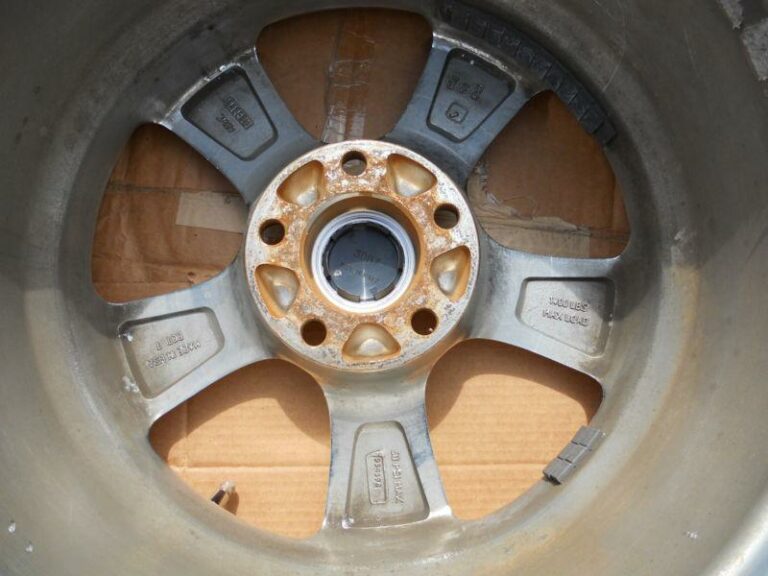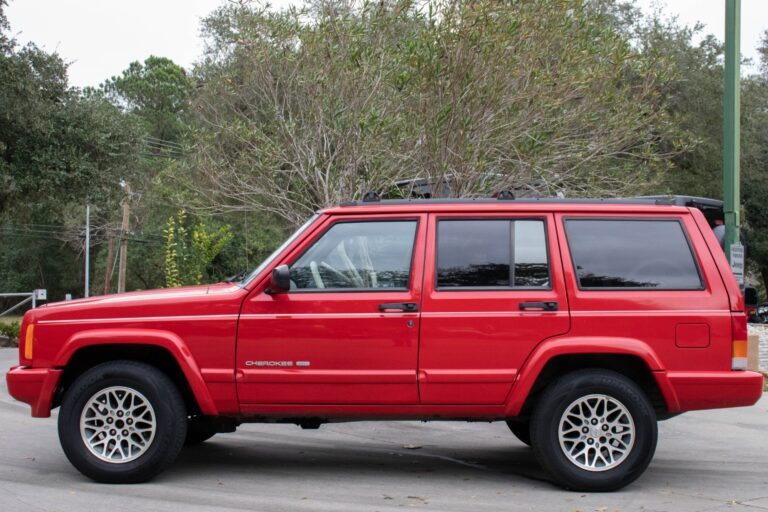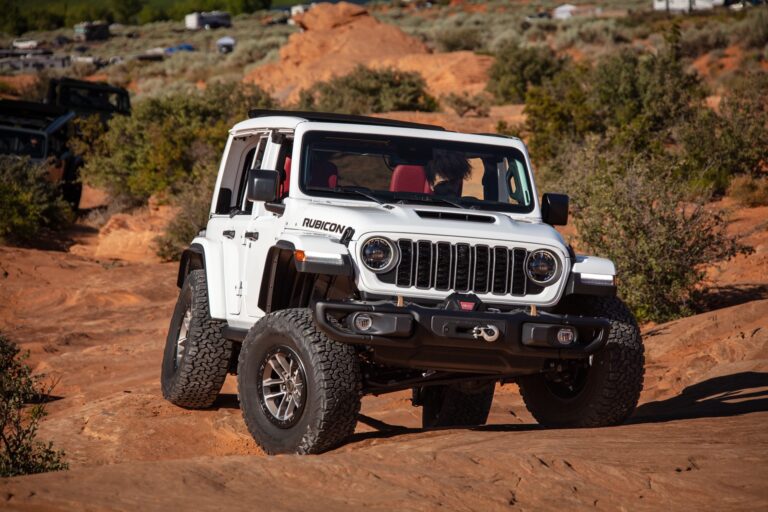1984 Jeep Grand Wagoneer For Sale: An Icon Reborn
1984 Jeep Grand Wagoneer For Sale: An Icon Reborn jeeps.truckstrend.com
The mention of a "1984 Jeep Grand Wagoneer For Sale" immediately conjures images of classic Americana, a blend of rugged utility, and an understated luxury that defined an era. More than just a vehicle, the Grand Wagoneer, particularly the 1984 model year, represents a unique slice of automotive history. It’s a statement of style, a testament to enduring design, and a highly sought-after classic that continues to capture the hearts of collectors and enthusiasts alike. This article serves as a comprehensive guide for anyone considering purchasing this iconic SUV, exploring its enduring appeal, what to look for, the buying process, and the joys and challenges of ownership.
The Enduring Appeal of the 1984 Grand Wagoneer
1984 Jeep Grand Wagoneer For Sale: An Icon Reborn
Introduced in 1963, the Wagoneer pioneered the luxury SUV segment, long before the term "SUV" became commonplace. By 1984, the Grand Wagoneer had reached a refined state, embodying the pinnacle of American family transportation with a touch of executive flair. Its distinctive faux woodgrain paneling, chrome accents, and boxy, yet elegant, silhouette set it apart.
Underneath its classic exterior, the 1984 Grand Wagoneer was powered by a robust AMC 360 cubic inch (5.9L) V8 engine, paired with a reliable three-speed automatic transmission (typically the Torqueflite 727) and Jeep’s legendary Selec-Trac (NP229) full-time four-wheel-drive system. This combination provided ample power for highway cruising, towing, and tackling light off-road trails, cementing its reputation as a versatile and dependable vehicle.
Beyond its mechanical prowess, the 1984 model offered a remarkably comfortable and spacious interior. Plush leather or velour seating, power windows, power locks, air conditioning, and a full complement of gauges created an inviting cabin environment. For many, the Grand Wagoneer wasn’t just a mode of transport; it was a mobile living room, a symbol of adventure, and a beloved family member. Today, its appeal lies in its nostalgic charm, its unique aesthetic, and its ability to stand out in a sea of modern, often generic, vehicles. Owning a 1984 Grand Wagoneer is about embracing a lifestyle, a connection to a bygone era of American automotive excellence.
What to Look For When Buying a 1984 Grand Wagoneer
Purchasing a vintage vehicle like a 1984 Grand Wagoneer requires a keen eye and a thorough understanding of common issues. Here’s a detailed breakdown of what to inspect:
- Rust: The Grand Wagoneer’s Arch Nemesis: This is arguably the most critical factor. Wagoneers are notorious for rust, especially in areas like the lower body panels, rocker panels, rear tailgate (particularly around the window and hinges), floorboards, and frame rails. Check thoroughly under the vehicle, inside the wheel wells, and along door seams. Surface rust is manageable, but extensive structural rust can be a deal-breaker or lead to very costly repairs.
- Mechanical Condition:

- Engine (AMC 360 V8): Listen for knocking, excessive smoke (blue for oil, white for coolant), or unusual noises. Check for oil leaks around the valve covers, oil pan, and rear main seal. Inspect the carburetor for proper operation; many owners opt for modern EFI conversions due to carb issues.
- Transmission (TorqueFlite 727): Ensure smooth shifts, both up and down. Check for fluid leaks and burnt fluid smell.
- Transfer Case (Selec-Trac NP229): Verify that 4WD engages and disengages properly. Listen for grinding or clunking noises. The vacuum lines for the front axle disconnect can often be problematic.
- Suspension & Steering: Check for worn bushings, leaky shocks, and sagging leaf springs. Test the power steering for excessive play or groaning noises.
- Brakes: Ensure firm pedal feel and effective stopping power. Inspect lines for corrosion and calipers for leaks.

- Exterior Condition:
- Woodgrain Paneling: Assess the condition of the vinyl woodgrain and the surrounding trim. Faded, cracked, or peeling woodgrain is common and can be expensive to replace accurately.
- Paint & Chrome: Look for peeling clear coat, significant dents, or poor repaint jobs. Chrome bumpers and trim should be free of pitting or major damage.
- Glass & Seals: Check for cracks in the windshield and proper sealing around all windows. The tailgate window mechanism is a common failure point.

- Interior Condition:
- Upholstery: Inspect the leather or velour seats for tears, excessive wear, or cracking. The driver’s seat typically shows the most wear.
- Dashboard: Look for cracks, especially near the defroster vents.
- Power Accessories: Test every power window, door lock, and seat function. These are frequent failure points due to aging wiring and components.
- Headliner: Sagging headliners are very common and relatively inexpensive to repair.
- HVAC System: Test the air conditioning (often converted to R134a) and heater.
- Documentation: Always ask for service records. A history of consistent maintenance is a strong indicator of a well-cared-for vehicle. A clean title is paramount.
The Buying Process: Navigating the Market
Finding the right 1984 Grand Wagoneer requires patience and diligence.
- Where to Look:
- Online Auction Sites: Bring a Trailer and eBay Motors are popular for well-documented, higher-end examples.
- Specialty Dealers: Several dealerships specialize in classic SUVs, including Grand Wagoneers, often offering restored or well-maintained vehicles at a premium.
- Online Marketplaces & Forums: Craigslist, Facebook Marketplace, and dedicated Grand Wagoneer owner forums can yield gems, but often require more thorough vetting.
- Auctions: Classic car auctions can offer a wide range, but do your homework and set a strict budget.
- Pre-Purchase Inspection (PPI): This is non-negotiable. If you’re serious about a vehicle, especially one out of your immediate area, invest in a PPI by an independent mechanic familiar with vintage Jeeps. They can identify issues you might miss and provide a realistic assessment of repair costs.
- Valuation & Negotiation: Prices vary wildly based on condition, originality, mileage, and recent restoration work. Use resources like Hagerty Valuation Tools, recent auction results, and online sales data to understand fair market value. Be prepared to negotiate, especially if you uncover issues during your inspection. Highlight any necessary repairs to justify a lower offer.
Owning a 1984 Grand Wagoneer: Joys and Challenges
Owning a Grand Wagoneer is a unique experience, full of character and charisma.
- The Joys:
- Head-Turner: These vehicles command attention and often spark conversations.
- Comfortable Cruiser: Despite its age, the ride is surprisingly comfortable, making it suitable for road trips.
- Capable: With its robust 4WD system, it can handle adverse weather and light off-road adventures.
- Strong Community: A dedicated and helpful community of Grand Wagoneer owners provides invaluable support, advice, and camaraderie.
- Potential Appreciation: Well-maintained and restored examples have shown significant appreciation in value over the years.
- The Challenges:
- Fuel Economy: Expect single-digit MPG figures. This is not an economical daily driver.
- Parts Availability: While many common mechanical parts are available (often shared with other AMC/Jeep vehicles), some specific interior or trim pieces can be difficult or expensive to source.
- Maintenance Costs: Be prepared for ongoing maintenance. Even well-restored vehicles will require attention. Rust repair, electrical gremlins, and aging rubber components are common. Finding qualified mechanics familiar with these older carbureted systems can also be a challenge.
- Reliability: While robust, it’s a 40-year-old vehicle. Expect occasional breakdowns or issues, especially if not meticulously maintained.
Customization and Upgrades
Many Grand Wagoneer owners choose to modernize their vehicles while preserving their classic aesthetic. Common upgrades include:
- EFI Conversions: Replacing the carburetor with a modern Electronic Fuel Injection system significantly improves cold starts, fuel economy, and overall drivability.
- Suspension Lifts: Modest lifts can accommodate larger tires, enhancing both looks and off-road capability.
- Audio System Upgrades: Modern sound systems can be discreetly integrated.
- Air Conditioning Upgrades: Converting to R134a refrigerant and upgrading components can improve cooling performance.
- Brake Upgrades: Upgrading to disc brakes on all four wheels (if not already equipped) or larger rotors can improve stopping power.
1984 Jeep Grand Wagoneer For Sale: Estimated Price Guide
Please note that these are estimates and actual prices can vary wildly based on specific condition, mileage, originality, provenance, geographic location, and market demand at the time of sale.
| Condition Category | Price Range (USD) | Key Features / Considerations |
|---|---|---|
| Project / Parts Car | $2,000 – $8,000 | Significant rust, non-running engine, major mechanical issues, incomplete interior, missing trim. Best for experienced restorers or as a donor vehicle. Requires substantial investment. |
| Driver Quality | $8,000 – $20,000 | Runs and drives, but likely has noticeable rust, worn interior, faded paint, and numerous mechanical/electrical issues that need addressing. Can be enjoyed as is, but requires ongoing repairs and maintenance. |
| Good Driver | $20,000 – $40,000 | Minimal to no significant rust, presentable paint and woodgrain (may have flaws), generally solid mechanicals, functional power accessories (mostly). May have some deferred maintenance or minor cosmetic imperfections. Ready to be enjoyed with minor upkeep. |
| Excellent Original | $40,000 – $65,000 | Very clean, largely original condition with well-preserved paint, woodgrain, and interior. Minimal rust. All systems generally functional. May have low mileage. Represents a well-maintained, unrestored example that stands out. |
| Concours / Restored | $65,000 – $100,000+ | Full frame-off restoration, meticulous attention to detail, pristine paint, new woodgrain, flawless interior, fully rebuilt mechanicals. Often includes modern upgrades (EFI, A/C) seamlessly integrated. Show-quality vehicle, often commanding top dollar at auctions. |
Frequently Asked Questions (FAQ)
Q: What’s the typical fuel economy of a 1984 Grand Wagoneer?
A: Expect very low fuel economy, typically in the range of 8-12 miles per gallon (MPG) for city driving and slightly better on the highway.
Q: Are parts for the 1984 Grand Wagoneer hard to find?
A: Common mechanical parts (engine, transmission, drivetrain components) are generally available, often through specialist vendors. However, specific interior trim, unique exterior pieces, and some electrical components can be challenging and expensive to source.
Q: Can a 1984 Grand Wagoneer be a reliable daily driver?
A: While possible, it’s not ideal for most. They require consistent maintenance and attention. Many owners use them as weekend cruisers or secondary vehicles. Modern EFI conversions can significantly improve daily drivability.
Q: What’s the biggest issue to look out for on these vehicles?
A: Rust, particularly in the frame, rocker panels, and tailgate, is the most common and often most expensive issue to repair. Electrical issues (power windows, locks, gauges) are also very common.
Q: What’s the difference between a Wagoneer and a Grand Wagoneer?
A: By 1984, "Grand Wagoneer" was the sole trim level for the full-size Wagoneer line, signifying the top-tier luxury offering. Earlier models had "Wagoneer" and "Cherokee" versions with different trim levels.
Q: Should I buy a restored Grand Wagoneer or a project car?
A: It depends on your budget, mechanical skills, and time commitment. A restored vehicle costs more upfront but requires less immediate work. A project car is cheaper initially but can quickly exceed the cost of a restored one if you pay for professional work.
Conclusion
The 1984 Jeep Grand Wagoneer remains a captivating and timeless classic, offering a blend of nostalgic charm, rugged capability, and unique style. For those seeking a vehicle that stands apart from the crowd, an opportunity to own a piece of American automotive heritage is truly special. While ownership comes with its challenges, the rewards of cruising in this iconic SUV, connecting with a passionate community, and potentially seeing your investment appreciate can be incredibly fulfilling. Approach the purchase with thorough research, a realistic budget for maintenance, and a genuine appreciation for its character, and you’ll find that acquiring a 1984 Jeep Grand Wagoneer for sale is not just buying a car, but embracing a lifestyle.





